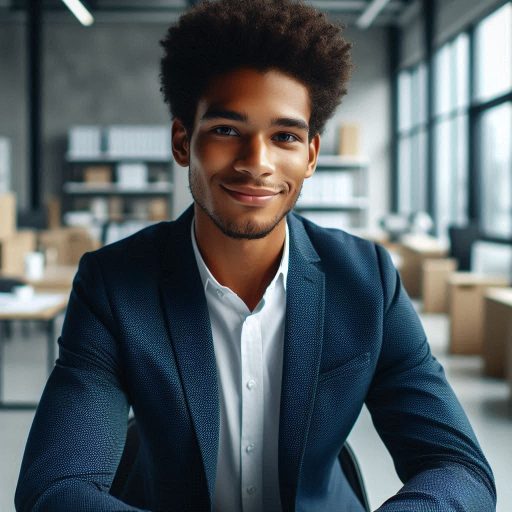Introduction
Professional event design is a dynamic field that involves creating and executing unforgettable experiences for clients.‘
Daily tasks are crucial in ensuring that events run smoothly and meet the clients’ expectations.‘‘
Tasks include researching venue options, creating mood boards, and coordinating with vendors for supplies.‘
Designers must also create detailed timelines, budgets, and contingency plans to address any potential issues.‘‘
During events, designers oversee setup, manage vendor delivery, and ensure that the layout matches the original plan.‘
Handling last-minute changes, troubleshooting technical issues, and managing staff are also essential tasks.‘
After the event, designers assess client feedback, review budgets, and analyze what worked well and what could be improved.‘
They also update their portfolio with photos and testimonials to showcase their work to potential clients.‘
In fact, daily tasks are the backbone of professional event design, ensuring that every detail is perfect.
Meeting with clients
As a professional event designer, one of the key daily tasks involves meeting with clients to ensure that their event is planned and executed seamlessly.
These meetings are essential for understanding the client’s needs, preferences, and vision for the event.
Schedule and conduct meetings with clients to discuss their event requirements
Meeting with clients is where the magic begins.
It is crucial to schedule and conduct meetings promptly to kickstart the event planning process.
During these meetings, the event designer listens attentively to the client’s ideas, requirements, and expectations.
Understand their vision and expectations for the event
Understanding the client’s vision is vital in delivering a successful event.
By actively listening and engaging with clients, event designers can capture the essence of what the client envisions for their event.
This may include themes, color schemes, and specific preferences that the client wants to incorporate.
Take detailed notes and create action plans based on client preferences
Taking detailed notes during client meetings is crucial for keeping track of all the important details discussed.
Event designers jot down key points, preferences, and requirements to ensure that nothing is overlooked during the planning process.
These notes serve as a reference point for creating action plans later on.
Transform Your Career Today
Unlock a personalized career strategy that drives real results. Get tailored advice and a roadmap designed just for you.
Start NowBased on the information gathered from client meetings and notes taken, event designers then create action plans.
These plans outline the specific steps and tasks required to bring the client’s vision to life.
Each action plan is tailored to suit the client’s preferences and ensures that every aspect of the event is meticulously planned.
In short, meeting with clients is a fundamental daily task for professional event designers.
It sets the foundation for successful event planning by understanding the client’s vision, preferences, and requirements.
By scheduling meetings, actively listening, taking detailed notes, and creating action plans, event designers can deliver memorable and tailored events that exceed client expectations.
Read: Art and Design Trends to Watch This Year
Research and planning
Conduct research on latest event trends and design ideas
As a professional event designer, the first step in creating a successful event is conducting thorough research.
This involves staying up-to-date on the latest event trends and design ideas to ensure that your event stands out and captivates your audience.
Create detailed event plans, including budget, timeline, and design concept
Once you have gathered inspiration and ideas, the next crucial task is to create a detailed event plan.
This plan should include a comprehensive budget that allocates funds for each aspect of the event, from venue rental to decorations.
The timeline is also essential, outlining deadlines for tasks leading up to the event day.
Additionally, the design concept must be developed to tie all elements of the event together cohesively.
Collaborate with vendors and suppliers to secure necessary materials and services
Collaboration is key in the event planning process.
Event designers must work closely with vendors and suppliers to secure necessary materials and services for the event.
This includes everything from floral arrangements to lighting equipment.
Building strong relationships with these partners ensures that the event runs smoothly and that all details are executed according to plan.
In essence, research and planning are fundamental daily tasks for a professional event designer.
By staying informed, creating detailed plans, and collaborating effectively, event designers can bring their creative visions to life and deliver memorable experiences for their clients and attendees.
Read: Prominent Female Tattoo Artists to Follow
Transform Your Career Today
Unlock a personalized career strategy that drives real results. Get tailored advice and a roadmap designed just for you.
Start NowSite visits and inspections
Visit event venues to assess layout, decor, and logistical requirements
When it comes to the daily tasks of a professional event designer, site visits and inspections play a crucial role in the overall event planning process.
These visits are essential for ensuring that the chosen venue is suitable for the event and can accommodate all the necessary requirements.
Conduct inspections to ensure the venue meets safety and quality standards
During site visits, event designers meticulously assess the layout of the venue to determine where each element of the event will be placed.
This includes evaluating the decor of the space to ensure it aligns with the event theme and overall design concept.
By physically visiting the venue, designers can better visualize how the event will flow and make any necessary adjustments to enhance the guest experience.
Coordinate with venue staff to address any concerns or make necessary adjustments
In addition to assessing the layout and decor, event designers conduct thorough inspections to ensure the venue meets safety and quality standards.
This involves checking for any potential hazards or issues that could impact the event or pose a risk to attendees.
By proactively identifying and addressing these concerns, designers can mitigate any potential problems and ensure a safe and enjoyable experience for all guests.
Furthermore, event designers work closely with venue staff during site visits to address any concerns that may arise.
This collaboration is essential for coordinating logistics and making any necessary adjustments to the layout or setup of the venue.
By maintaining open communication with venue staff, designers can address any challenges in real-time and find solutions that meet the needs of the event.
Overall, site visits and inspections are critical components of the event design process.
By carefully evaluating event venues, conducting thorough inspections, and collaborating with venue staff, professional event designers can ensure that every detail is taken care of and that the event runs smoothly from start to finish.
Read: The Impact of Calligraphy on Modern Design

Design development
Create mood boards, sketches, and visual presentations to communicate design concepts
Design development is a crucial part of the daily tasks of a professional event designer.
It involves the creation of mood boards, sketches, and visual presentations to effectively communicate design concepts to clients and team members.
Select and source decor, furniture, lighting, and other design elements
Creating mood boards is a creative process that helps in visualizing the overall look and feel of an event.
It includes gathering inspiration, colors, textures, and themes that will be incorporated into the design.
Sketches are essential for translating ideas into tangible representations.
Work closely with a team of designers and assistants to bring the design vision to life
Visual presentations are used to showcase the proposed design to clients, providing them with a clear understanding of how the event will look.
Transform Your Career Today
Unlock a personalized career strategy that drives real results. Get tailored advice and a roadmap designed just for you.
Start NowIt helps in getting their approval and feedback before moving forward with the execution of the design.
Once the design concepts are approved, the next step involves selecting and sourcing decor, furniture, lighting, and other design elements.
This task requires attention to detail, knowledge of current trends, and the ability to source high-quality items within the specified budget.
Collaboration is key in design development, as event designers work closely with a team of designers and assistants to bring the design vision to life.
Each team member plays a vital role in executing the design concept, from procurement to installation, ensuring that every detail is executed according to the client’s expectations.
Basically, design development is a creative and collaborative process that requires a keen eye for design, excellent communication skills, and the ability to bring ideas to life in a visually stunning way.
Read: How to Host a Calligraphy Workshop Successfully
Coordination and communication
Communicate regularly with clients, vendors, and team members to keep everyone informed and on track
Effective coordination and communication are vital for a successful event designer.
Regular communication ensures that clients, vendors, and team members remain informed and aligned throughout the planning process.
Here‘s how event designers manage these crucial tasks.
Coordinate event logistics, such as scheduling deliveries, setting up decor, and managing staff
First, event designers maintain open lines of communication.
They schedule regular check-ins with clients to discuss updates and address concerns.
These discussions help clarify expectations and build strong relationships.
By communicating frequently, they foster trust and collaboration among all parties.
Handle any last-minute changes or unexpected issues with professionalism and efficiency
Next, event designers meticulously coordinate event logistics.
They create detailed timelines for the event, outlining key tasks and deadlines.
This includes scheduling deliveries of supplies and setting up decor.
They work closely with vendors to ensure everything arrives on time.
Coordinating staff assignments and roles is also essential.
Designers ensure that everyone knows their responsibilities, allowing for a smooth execution on event day.
Transform Your Career Today
Unlock a personalized career strategy that drives real results. Get tailored advice and a roadmap designed just for you.
Start NowHandling last-minute changes is another critical aspect.
Events often come with unexpected challenges, such as weather changes or vendor delays.
A professional event designer approaches these situations with calm and efficiency.
They quickly assess the issue, brainstorm solutions, and communicate with affected parties.
This ability to adapt and respond effectively minimizes disruptions and keeps the event on track.
Therefore, coordination and communication are at the heart of successful event design.
By maintaining regular contact with clients, managing logistics efficiently, and handling unexpected issues professionally, event designers create memorable experiences.
Their dedication to clear communication and meticulous planning leads to seamless events that exceed client expectations.
Strong coordination skills ultimately make the difference between a stressful event and a well-executed celebration.
On-site supervision
On-site supervision is a crucial aspect of a professional event designer’s role.
It involves overseeing the setup and installation of all event elements to ensure that everything is executed according to plan.
This includes coordinating with staff and vendors to ensure that the event runs smoothly and efficiently.
Oversee setup and installation‘
One of the primary responsibilities of a professional event designer during an event is to oversee the setup and installation of all event elements.
This includes coordinating with vendors, contractors, and staff to ensure that everything is set up according to the client’s specifications and design vision.
Manage event flow‘
Another important task during the event is to manage the flow of the event.
This involves coordinating with all stakeholders, including staff, vendors, and clients, to ensure that the event runs smoothly and according to schedule.
The event designer must be able to troubleshoot any issues that may arise and make quick decisions to keep the event on track.
Work closely with staff and vendors‘
During the event, the event designer must work closely with staff and vendors to ensure a successful and seamless event experience for clients and guests.
This includes coordinating with catering staff, audiovisual technicians, and other vendors to ensure that all event elements are executed flawlessly.
The event designer must be able to communicate effectively with all parties involved and make quick decisions to resolve any issues that may arise.
Transform Your Career Today
Unlock a personalized career strategy that drives real results. Get tailored advice and a roadmap designed just for you.
Start NowAll in all, on-site supervision is a critical aspect of a professional event designer’s role.
By overseeing the setup and installation of event elements, managing event flow, and working closely with staff and vendors, the event designer can ensure a successful and seamless event experience for clients and guests.
Find Out More: Behind the Scenes: Production Design Process
Learn More: Behind the Scenes: Costume Design in Film
Post-event evaluation
Conduct post-event debriefings with clients and team members to evaluate the event’s success
After the hustle and bustle of the event has settled down, it’s time for the event designer to shift their focus to evaluating the success of the event.
This step is crucial in improving future events and ensuring client satisfaction.
Gather feedback from guests and clients to identify areas for improvement
One of the primary tasks during post-event evaluation is conducting debriefings with clients and team members.
This allows for an open discussion about what went well and what could be improved upon in the next event.
It also helps in strengthening the relationship with clients by showing that their feedback is valued.
Reflect on the event design process and make notes for future reference
Another essential aspect of post-event evaluation is gathering feedback from guests and clients.
This feedback can provide valuable insights into the overall guest experience, helping to identify areas that need improvement for future events.
It also allows the event designer to gauge client satisfaction and make necessary adjustments to meet their expectations.
Reflecting on the event design process is equally important during post-event evaluation.
Looking back at the initial planning stages, the decisions made, and the outcomes achieved can help in identifying strengths and weaknesses in the event design.
Making notes for future reference based on this reflection ensures that lessons learned are not forgotten and can be applied in future projects.
Essentially, post-event evaluation plays a vital role in the continuous improvement of an event designer’s work.
By seeking feedback, reflecting on the process, and making necessary adjustments, event designers can enhance their skills and deliver even more successful events in the future.
Conclusion
A professional event designer’s daily tasks are varied and dynamic.
First, they begin by reviewing project briefs and timelines.
Understanding client needs is crucial for successful event execution.
Transform Your Career Today
Unlock a personalized career strategy that drives real results. Get tailored advice and a roadmap designed just for you.
Start NowNext, they conduct site visits to evaluate venues.
This helps them visualize layouts and design elements effectively.
After site visits, they create detailed design plans.
These plans outline themes, color schemes, and overall aesthetics.
Effective communication with clients ensures everyone is aligned on the vision.
Event designers also collaborate with vendors and suppliers.
They negotiate contracts and confirm deliveries, which helps maintain project timelines.
Another essential task is managing budgets.
Event designers track expenses to ensure projects remain financially viable.
Regular updates keep clients informed about any changes or adjustments.
They also oversee the installation of design elements at the venue.
This includes arranging decor, lighting, and furniture setup.
On event day, designers coordinate logistics.
They manage timelines, troubleshoot issues, and ensure everything runs smoothly.
Their adaptability is key to handling unexpected challenges.
After the event, they conduct evaluations to assess outcomes.
Gathering feedback helps improve future projects.
Organization, communication, and creativity are vital in this field.
Strong organizational skills enable designers to juggle multiple tasks efficiently.
Clear communication fosters collaboration among teams and clients.
Transform Your Career Today
Unlock a personalized career strategy that drives real results. Get tailored advice and a roadmap designed just for you.
Start NowCreativity brings unique visions to life, making each event memorable.
In summary, a professional event designer’s daily tasks involve planning, coordinating, and executing events.
Their success hinges on effective organization, communication, and creativity.
These elements ensure events not only meet client expectations but also leave lasting impressions.
By mastering these skills, event designers create experiences that resonate with attendees.




